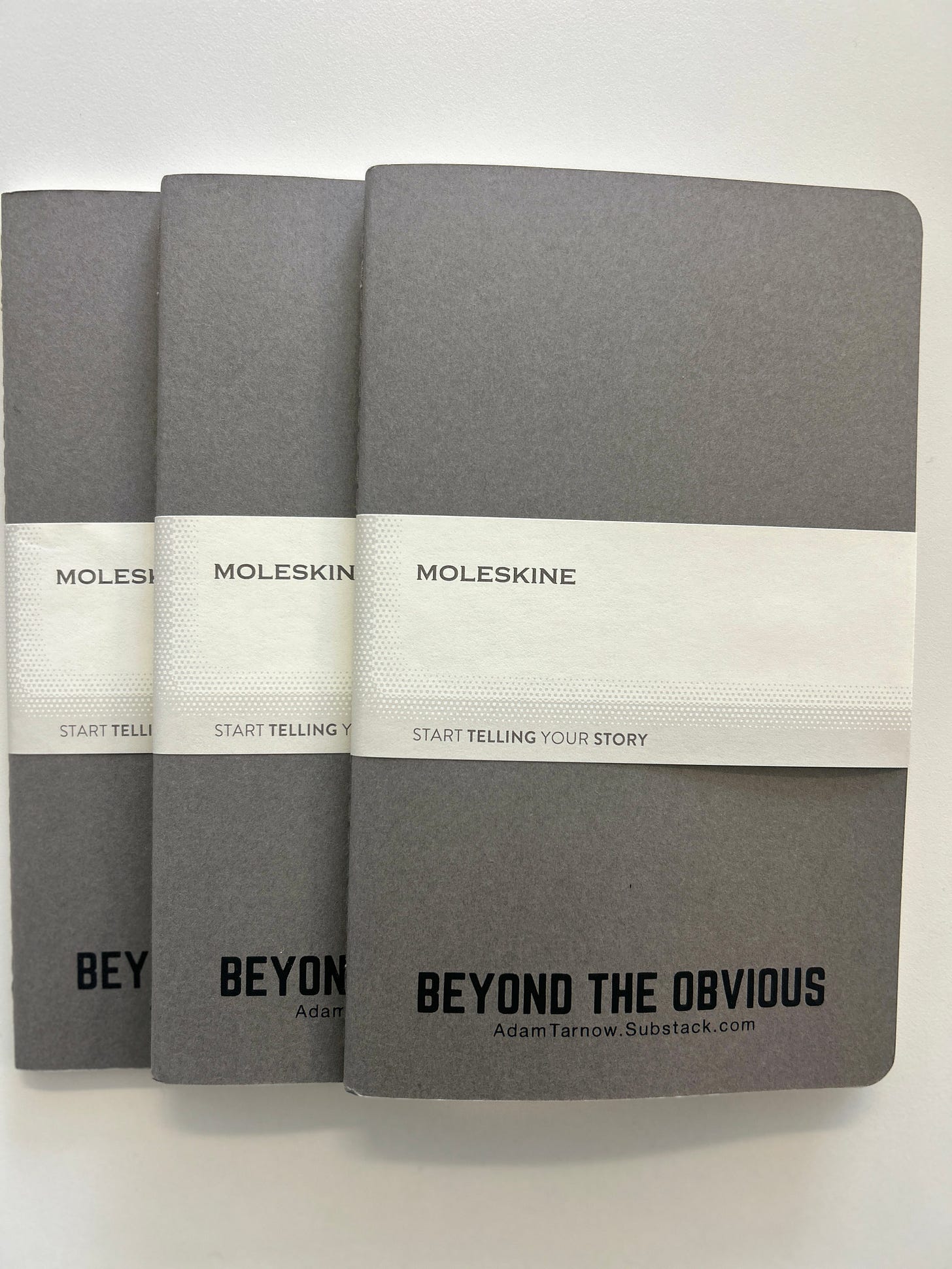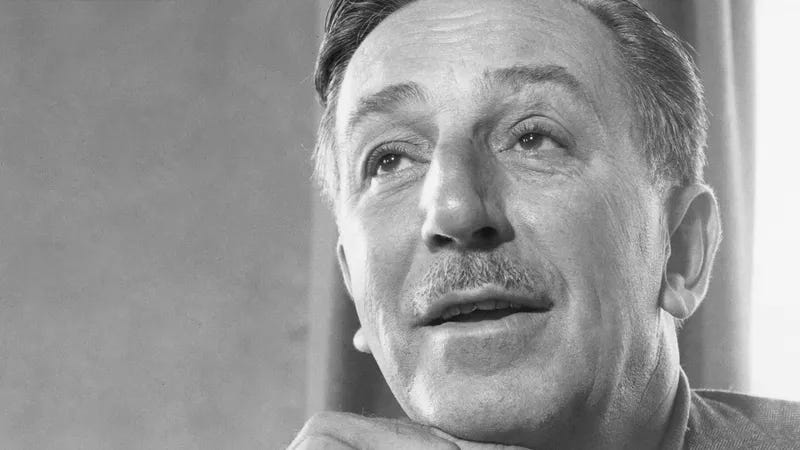Walt Disney, Don Draper, and the Truth About Creativity
This isn’t a joke—these are my February highlights
January drags on forever, like a never-ending first chapter of a book. Then February shows up and does us a solid—‘Don’t worry, I’ll keep this one short so you feel like you’re making progress.’ It’s the literary equivalent of turning the page and realizing the next chapter is half as long. Thanks, February. We needed that.
Speaking of books…let’s start there…
February Reads & Ratings…
I finished up seven books this month.
10 to 25 – David Yeager (⭐️⭐️⭐️⭐️½)
A fascinating look at what motivates people aged 10 to 25. Easy to read, highly applicable, and full of insights.
Be the Unicorn – William Vanderbloemen (Kindle) (⭐️⭐️⭐️)
Honestly? It felt like The Edge with fewer jokes.
Six Thinking Hats – Edward De Bono (Audible) (⭐️⭐️⭐️½)
A classic I somehow never read. If you collaborate often, this is an invaluable framework.
Meditations for Mortals – Oliver Burkeman (⭐️⭐️⭐️½)
Short chapters, quick read. The great ones were mind-blowing, the weak ones were mind-numbing. Proceed with caution.
Never Lead Alone – Keith Ferrazzi (Kindle) (⭐️⭐️⭐️)
I wanted to love this book. I didn’t.
The Dream Manager – Matthew Kelly (Kindle) (⭐️⭐️⭐️)
A cool premise with one standout quote I keep repeating: “Most people don’t fail because they want to fail; they fail because they don’t know how to succeed.”
Food for Thought – Alton Brown (Audible) (⭐️⭐️⭐️½)
If you like Alton Brown, you’ll love this. I like Alton Brown. A fun, engaging listen.
The most helpful book this month was 10 to 25.
If you don’t have time to read the book, this podcast episode contains a good summary.
Where I traveled…
Four trips this month:
Atlanta, GA
Houston, TX (twice!)
Decatur, AL (pictured above)
Podcast Update…
Clay and I (like every other podcaster alive) are now throwing our episodes on YouTube. So if you’ve been dying to watch us talk instead of just listening, here’s your chance.
“Smash that like & subscribe button!”
Subscribe to the How to Lead YouTube Channel.
Subscribe to my YouTube Channel (where I post Shorts from each episode).
What I taught…
Tons of classroom time this month:
How to say what needs to be said (giving feedback when you’d rather not)
How “Energy” positively impacts your personal brand (from The Edge)
How job fit influences performance and engagement
How to run effective meetings
Coaching and developing the next generation of leaders
If any of these resonate, I’d love to explore how they could support your team.
You can still win a Moleskine® Journal…
I had a great time giving away five journals last month. You can still win one by referring new subscribers. If you find this content helpful, please share it with your friends so I can continue to grow this community!
Refer five new subscribers to win a Beyond the Obvious Moleskine® journal.
Refer fifteen new subscribers to win a signed copy of The Edge for you or anyone in your network.
Refer thirty-five new subscribers to win any book from my top ten list for you or anyone in your network.
Insights on Common Work-Life Challenges…
Creativity Is Work: Three Quotes That Keep Me Going
Last week, I started listening to Neal Gabler’s tome on Walt Disney. This book is thirty-three hours long. That is not a typo. For comparison, The Edge clocks in at four and a half hours. Just sayin’.
I’m sure I’ll have more to say about Gabler’s book next month, but for now, here’s what’s sticking with me: Walt Disney is known for his creativity—but what most of us call creativity, Walt called work.
Say what you will about the man, he was relentless. He worked hard and sincerely believed in what he was doing. Hearing about his early career reminded me of the famous Thomas Edison quote:
“Opportunity is missed by most people because it’s dressed in overalls and looks like work.”
All that to say, creativity is on my mind.
Creativity Isn’t Just for “Creatives”
Everyone, no matter their title or tenure, needs a boost of creativity now and then—to solve problems, engage a team, get out of a rut. But here’s the hard truth: Creativity isn’t magic. It’s not about waiting for a stroke of genius or hoping inspiration strikes while walking the dog.
Throughout my 27-year career, I can remember a “killer idea” hitting me out of nowhere exactly once. You read that right—one time. The other 99.99% of the time, creativity looked and felt like work. Sorry to burst your bubble.
That’s why I want to share my three favorite quotes about creativity—because if you can embrace these, you’ll stop waiting for inspiration and start getting to work.
1. “Bad ideas lead to good ideas.” — Jonathan Pokluda
When I was working with my friend Jonathan Pokluda, we’d brainstorm sermon ideas together. Any time we got stuck, he’d remind me and the others collaborating with us: Bad ideas lead to good ideas.
This is one of the most underrated truths about creativity. The more ideas you generate—no matter how bad—the closer you’ll get to something great. Quantity over quality is the secret.
Most people think creative geniuses wake up with fully formed, world-changing ideas. Nope. They start with garbage (I.e., “bad ideas”). But they keep going. They push through. They throw things at the wall and see what sticks.
If you want to be more creative, stop judging your ideas before they can develop. Instead, put in more reps.
2. “Peggy, just think about it. Deeply. Then forget it. And an idea will jump up in your face.” — Don Draper (Mad Men)
Lately, AMC has been airing Mad Men on repeat. And before I go any further—yes, this is better than TBS playing A Christmas Story non-stop over Christmas. Fight me.
If you know, you know. If you don’t, here’s all you need to know: Don Draper was a Creative Director at a fictional ad agency, and when I heard him say this line to his associate Peggy, I thought: That’s pure gold.
Because it’s true, sometimes, the best thing you can do for creativity is to stop working on it.
If I’m stuck on an idea in the morning, I’ll step away and move on to something else. If nothing’s clicking by evening, I’ll go to bed. And more often than not, by the following day, the answer is staring me in the face.
Your brain works on problems even when you’re not consciously thinking about them. So if you’re hitting a wall, don’t just keep pounding away. Walk away. Let your subconscious do the heavy lifting.
3. “Kill your darlings.” — Arthur Quiller-Couch
The earliest known use of this phrase was in a 1916 book On the Art of Writing. It means this: Eliminate anything that doesn’t serve the final goal.
And if you’ve embraced #1 and #2, this is where the real work comes in.
You’ve generated a bunch of ideas. You’ve stepped away and let the best ones rise to the surface. Now? You have to start cutting.
There is a reason The Academy of Motion Picture Arts and Sciences gives out an Oscar for best editing. Knowing what to cut is a creative act.
The best creative work isn’t cluttered—it’s clear. Simplicity and clarity aren’t accidents; they result from ruthless editing.
This is why so many people never get past “brainstorming” mode. They love their ideas too much to let any of them go. But if you want the best idea to shine, you must let others die.
Creativity Isn’t Magic—It’s a Process
If you’re waiting for inspiration to strike, you’ll be waiting a long time. But if you start treating creativity like a process—generate, step away, then edit ruthlessly—you’ll begin producing better ideas, more often.
So, what’s next? Try it. Right now.
Throw out some bad ideas. Walk away for a bit. Then come back and start cutting.
That’s where the magic happens.












7 books!
Geese. Do you sleep? Or do you just read every third word?
From someone who is a chronic conflict avoider, would love a download on "How to say what needs to be said."